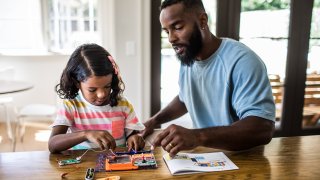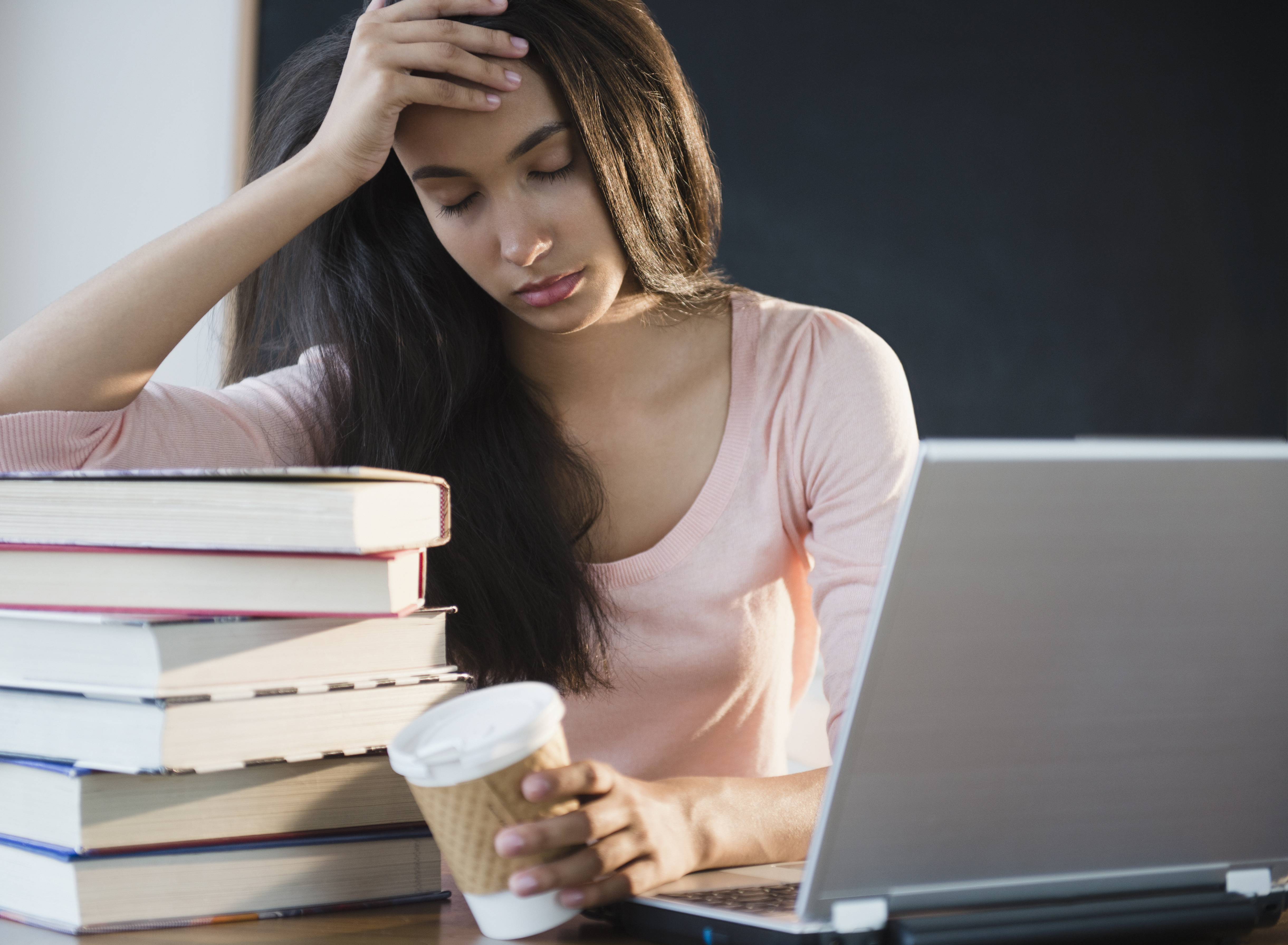
Though coronavirus case numbers continue to rise in many areas, schools are reopening for the fall semester across the United States.
The American Academy of Pediatrics (AAP) recently made a general recommendation that children physically return to school for the social and emotional benefits and for access to a better learning environment, especially for students with special needs. The AAP also noted that returning to school could help narrow the gap in racial and socioeconomic inequities between students' households.
With cities and workplaces reopened, working parents worry they could be forced to choose between their jobs and their children if their young kids cannot return to school.
But with states still recording thousands of new COVID-19 cases a day, both parents and teachers are wondering whether sending children back to school in person is really the right choice.
How do parents decide? We asked experts in both education and COVID-19 including NBC medical correspondent Dr. John Torres to help create a checklist of questions parents can ask themselves before determining whether their children need new school clothes or new pajamas.
Download the TODAY app for the latest coverage on the coronavirus outbreak.
1. How old are your children?
The emerging science seems to indicate that children under the age of 10 are less likely to get infected and less likely to transmit COVID-19 than older children and adults — although their risk is not zero — Dr. Celine Gounder, an infectious disease specialist and epidemiologist at Bellevue Hospital in New York City, told TODAY Parents.
For that reason, Gounder said "age is a major factor" in deciding whether or not to send children back to school in person this fall.
Younger children can be isolated in a single classroom more easily than middle school or high school students, and they benefit from the experience in an actual classroom, she noted. Older children have other ways to socialize and can handle virtual learning better, even if it isn't their ideal learning medium.
Another factor in regard to children's ages, Torres said in his recent TODAY interview, is whether a child is old enough to be able to implement the necessary safety protocols. Can they wear a mask reliably and keep appropriate social distance?
Gounder added that a positive diagnosis in an elementary school student would not necessarily mean the other students or teacher in the class were at risk of infection, since young children are most likely to catch the virus from an adult and not pass it to their peers. But teenagers easily transmit the virus amongst themselves, so high school students are much more likely to have to quarantine.
Watch TODAY All Day! Get the best news, information and inspiration from TODAY, all day long.
2. What is the health of your household?
Dr. Tim Lahey, an infectious disease specialist and the director of clinical ethics at the University of Vermont Medical Center, told TODAY Parents that parents should be asking themselves what is best for their child from both a medical and developmental standpoints.
"Certainly, in the middle of this epidemic, I would not send a higher risk child like one in treatment for leukemia back to school right now, even in a 'safer' state like Vermont," Lahey said.
Author and educator Jessica Lahey ("The Gift of Failure," "The Addiction Inoculation"), Dr. Lahey's wife, said that parents need to take other considerations into account as well.
For parents of special needs students, this is an especially individual and personal form of calculus. Some students need to be in a school to get the resources and assistance they need to learn. Others benefit from being at home and away from distractions or stressors. Parents know better than anyone what their children need.
Never miss a parenting story with the TODAY Parents newsletter. Sign up here!
Lahey noted that she has heard from parents whose children's mental health is suffering a lot due to the isolation of the past few months. However, others — including her own teenage son — have thrived in distance learning. She said her son has enjoyed the ability to sleep on his own body's natural schedule and learn "under his own steam."
Though parents might miss physical interaction, their teenagers might be getting what they need by FaceTiming, texting or playing video games with their friends online.
"We tend to superimpose our feelings about how we socialize on our kids and assume they are suffering, and for many kids, they probably are," she said. "But others might be totally fine. Every kid is different."
To some extent, these questions are state-specific as well, Dr. Lahey noted. "Ask yourself, 'What's my kid's risk? What's my risk? And how much is this virus affecting my state right now?'"
3. If you had to quarantine for two weeks starting tomorrow, could you?
Until there is a vaccine and it is widely available, there is no way to guarantee that your child will not be at the very least exposed to COVID-19. Before deciding to send kids back to a brick and mortar school, plan for the very likely scenario that your child — and, therefore, you — will at some point have to quarantine at least once this school year. If you are an essential or front-line worker, that might be a chance you cannot feasibly take.
4. Can you afford not to send them to school?
For some families, it's not economically feasible to keep their children at home to home-school or enroll in online school. "We need to acknowledge there will be single moms with essential jobs who need their kids to have someplace to go," Dr. Lahey.
But if you are fortunate enough to have the choice, and it makes sense for your family, Lahey said another benefit to keeping your child home would be knowing that you are being helpful. A less crowded school will be safer for those who do not have a choice, both teachers and students.
"We are asking teachers to take on an enormous amount of risk," she said. "We're asking teachers to become essentially front-line workers."
Gounder agreed.
"If you have the option, I would definitely exercise the option to keep your kids at home," Gounder said.
If you do send your children back to school face to face, Torres said to enforce the "three Ws" with them before they go: "Wear a mask, watch your six feet of social distancing, and wash your hands throughout the day."
And even though it might seem like there is no good answer to how to send your child back to school this fall, that in itself might be a gift.
"You can't really make an absolutely wrong choice here," Dr. Lahey said. "If you feel obligated to send a child to school, it's important to understand you should not be beset with guilt. For the majority of children, going to school is a safe thing. It isn't without risk, but it's not catastrophic risk. ...
"There's no perfect decision. Just say, 'I'm going to see what is possible and see what feels right and makes sense for our family this year,' knowing that next year will be completely different."
For more on the reopening of the American education system, watch “Pandemic: Back to School” anchored by Craig Melvin every Monday through Labor Day at 11 a.m. ET on MSNBC. Viewers can submit their own questions via Twitter with #MSNBCAnswers or sent to talk@msnbc.com.
This story first appeared on TODAY.com. More from TODAY:



